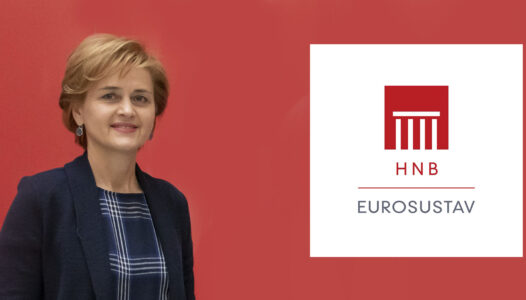by Christine Lagarde
The Governing Council decided last week to keep the three key ECB interest rates unchanged. The incoming information has broadly confirmed our previous assessment of the medium-term inflation outlook. Inflation has continued to fall, led by lower food and goods price inflation. Most measures of underlying inflation are easing, wage growth is gradually moderating, and firms are absorbing part of the rise in labour costs in their profits. Financing conditions remain restrictive and our past interest rate increases continue to weigh on demand, which is helping to push down inflation. But domestic price pressures are strong and are keeping services price inflation high.
We are determined to ensure that inflation returns to our two per cent medium-term target in a timely manner. We consider that the key ECB interest rates are at levels that are making a substantial contribution to the ongoing disinflation process. Our future decisions will ensure that our policy rates will stay sufficiently restrictive for as long as necessary. If our updated assessment of the inflation outlook, the dynamics of underlying inflation and the strength of monetary policy transmission were to further increase our confidence that inflation is converging to our target in a sustained manner, it would be appropriate to reduce the current level of monetary policy restriction. In any event, we will continue to follow a data-dependent and meeting-by-meeting approach to determining the appropriate level and duration of restriction, and we are not pre-committing to a particular rate path.
I will now outline in more detail how we see the economy and inflation developing and will then explain our assessment of financial and monetary conditions.
Economic activity
The economy remained weak in the first quarter. While spending on services is resilient, manufacturing firms are facing weak demand and production is still subdued, especially in energy-intensive sectors. Surveys point to a gradual recovery over the course of this year, led by services. This recovery is expected to be supported by rising real incomes, resulting from lower inflation, increased wages and improved terms of trade. In addition, the growth of euro area exports should pick up over the coming quarters, as the global economy recovers and spending shifts further towards tradables. Finally, monetary policy should exert less of a drag on demand over time. The unemployment rate is at its lowest level since the start of the euro. At the same time, the tightness in the labour market continues to gradually decline, with employers posting fewer job vacancies.
Governments should continue to roll back energy-related support measures so that disinflation can proceed sustainably. Implementing the EU’s revised economic governance framework fully and without delay will help governments bring down budget deficits and debt ratios on a sustained basis. National fiscal and structural policies should be aimed at making the economy more productive and competitive, which would help to reduce price pressures in the medium term. At the European level, an effective and speedy implementation of the Next Generation EU programme and a strengthening of the Single Market would help foster innovation and increase investment in the green and digital transitions. More determined and concrete efforts to complete the banking union and the capital markets union would help mobilise the massive private investment necessary to achieve this, as the Governing Council stressed in its statement of 7 March 2024.
Inflation
Inflation has continued to decline, from an annual rate of 2.6 per cent in February to 2.4 per cent in March, according to Eurostat’s flash estimate. Food price inflation dropped to 2.7 per cent in March, from 3.9 per cent in February, while energy price inflation stood at -1.8 per cent in March, after -3.7 per cent in the previous month. Goods price inflation fell again in March, to 1.1 per cent, from 1.6 per cent in February. However, services price inflation remained high in March, at 4.0 per cent. Most measures of underlying inflation fell further in February, confirming the picture of gradually diminishing price pressures. While domestic inflation remains high, wages and unit profits grew less strongly than anticipated in the last quarter of 2023, but unit labour costs remained high, in part reflecting weak productivity growth. More recent indicators point to further moderation in wage growth.
Inflation is expected to fluctuate around current levels in the coming months and to then decline to our target next year, owing to weaker growth in labour costs, the unfolding effects of our restrictive monetary policy, and the fading impact of the energy crisis and the pandemic. Measures of longer-term inflation expectations remain broadly stable, with most standing around 2 per cent.
Risk assessment
The risks to economic growth remain tilted to the downside. Growth could be lower if the effects of monetary policy turn out stronger than expected. A weaker world economy or a further slowdown in global trade would also weigh on euro area growth. Russia’s unjustified war against Ukraine and the tragic conflict in the Middle East are major sources of geopolitical risk. This may result in firms and households becoming less confident about the future and global trade being disrupted. Growth could be higher if inflation comes down more quickly than expected and rising real incomes mean that spending increases by more than anticipated, or if the world economy grows more strongly than expected.
Upside risks to inflation include the heightened geopolitical tensions, especially in the Middle East, which could push energy prices and freight costs higher in the near term and disrupt global trade. Inflation could also turn out higher than anticipated if wages increase by more than expected or profit margins prove more resilient. By contrast, inflation may surprise on the downside if monetary policy dampens demand more than expected, or if the economic environment in the rest of the world worsens unexpectedly.
Financial and monetary conditions
Market interest rates have been broadly stable since our March meeting and wider financing conditions remain restrictive. The average interest rate on business loans edged down to 5.1 per cent in February, from 5.2 per cent in January. Mortgage rates were 3.8 per cent in February, down from 3.9 per cent in January. Still elevated borrowing rates and associated cutbacks in investment plans led firms to further reduce their demand for loans in the first quarter of 2024, as reported in our latest bank lending survey. Credit standards for loans remained tight, with a further slight tightening for lending to firms and a moderate easing for mortgages. Against this background, credit dynamics remain weak. Bank lending to firms grew marginally faster in February, at an annual rate of 0.4 per cent, up from 0.2 per cent in January. Growth in loans to households remained unchanged in February, at 0.3 per cent on an annual basis. Broad money – as measured by M3 – grew at a subdued rate of 0.4 per cent in February.
Conclusion
The Governing Council decided to keep the three key ECB interest rates unchanged. We are determined to ensure that inflation returns to our two per cent medium-term target in a timely manner. We consider that the key ECB interest rates are at levels that are making a substantial contribution to the ongoing disinflation process. Our future decisions will ensure that our policy rates will stay sufficiently restrictive for as long as necessary. If our updated assessment of the inflation outlook, the dynamics of underlying inflation and the strength of monetary policy transmission were to further increase our confidence that inflation is converging to our target in a sustained manner, it would be appropriate to reduce the current level of monetary policy restriction. In any event, we will continue to follow a data-dependent and meeting-by-meeting approach to determining the appropriate level and duration of restriction, and we are not pre-committing to a particular rate path.
In any case, we stand ready to adjust all of our instruments within our mandate to ensure that inflation returns to our medium-term target and to preserve the smooth functioning of monetary policy transmission.






